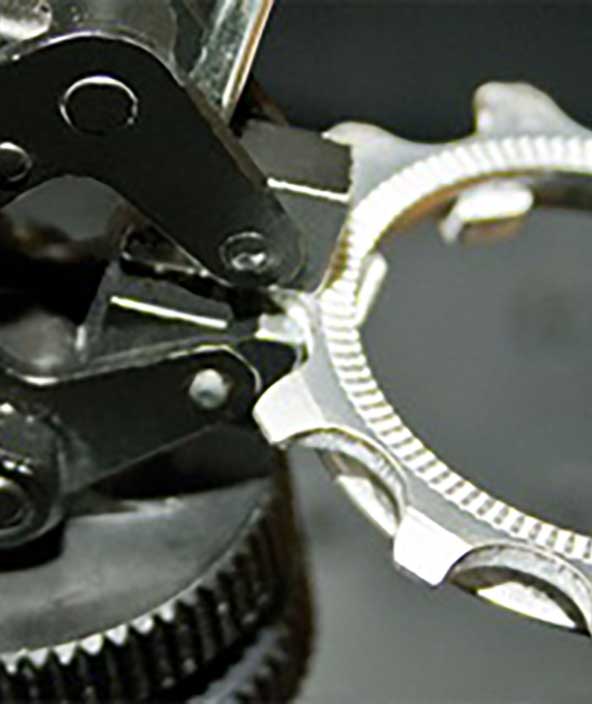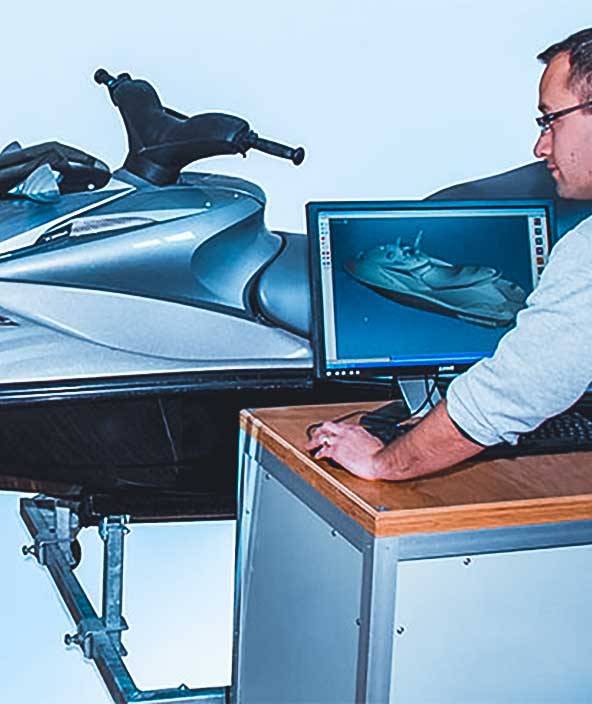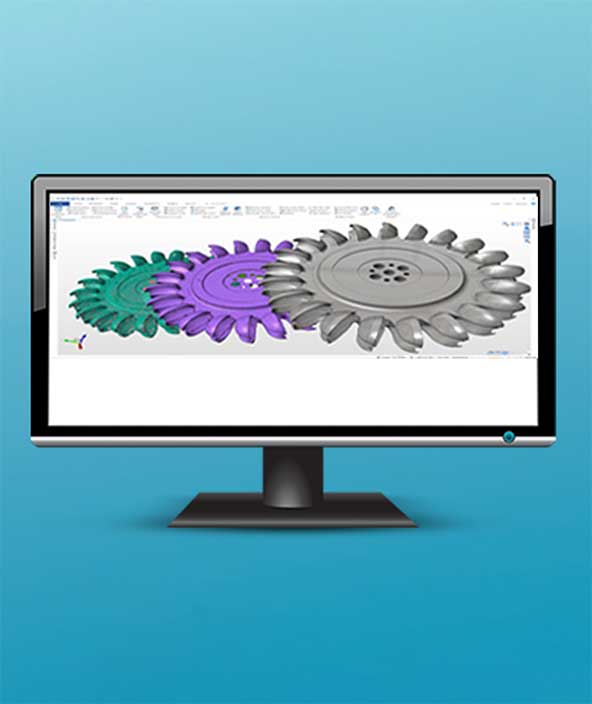Reverse engineering
Scan and digitise physical objects to 3D CAD models for reverse engineering.

Simplifying reverse engineering
Discover REcreate, a powerful reverse engineering software designed to streamline the reverse engineering process.
Reverse engineering from physical part to CAD model is vital for applications from product design, iteration and re-engineering to spare part production. Hexagon’s metrology range provides the right tools to digitalise any part, while dedicated software ensures a simple reverse engineering process.
Overview
Reverse engineering is a method of creating a 3D model from an existing physical part for use in computer-aided design (CAD), computer-aided manufacturing (CAM), computer-aided engineering (CAE) or other software. The process involves measuring an object with metrology equipment to reconstruct the virtual model.
Reverse engineering can be used in product design, iteration and reengineering, as well as to manufacture spares for legacy parts where no digital CAD exists. Historically, capturing the rich point cloud data required for reverse engineering could be challenging, particularly with irregular shapes and freeform surfaces. However, advances in 3D scanning technology and metrology software make it easier than ever to build robust reverse engineering workflows for every application.
Hexagon’s 3D scanning solutions provide point cloud data optimised for reverse engineering, while dedicated software helps to minimise the effort to refine and ready the CAD for reproduction.

Explore
$ProductName
$SustainabilityImpactLabel
$SustainabilityCTABandHeadingLabel
We’re climbing the automation curve
Our transition to Intelligent automation is accelerating. Ultimately, our innovations will give rise to new technologies and applications - many of which we’ve yet to imagine. Today, every Hexagon solution is mapped and tagged according to its level of automation, so customers can clearly track our progress towards the freedom of autonomy.
Land
Products that make an environmental impact in forest monitoring, material reusability, farming or water usage.
Air
Products that make an environmental impact in renewable energy, noise pollution elimination and e-mobility.
Water
Products that make an environmental impact in saving our oceans, reducing pollution and increasing access to clean water.





